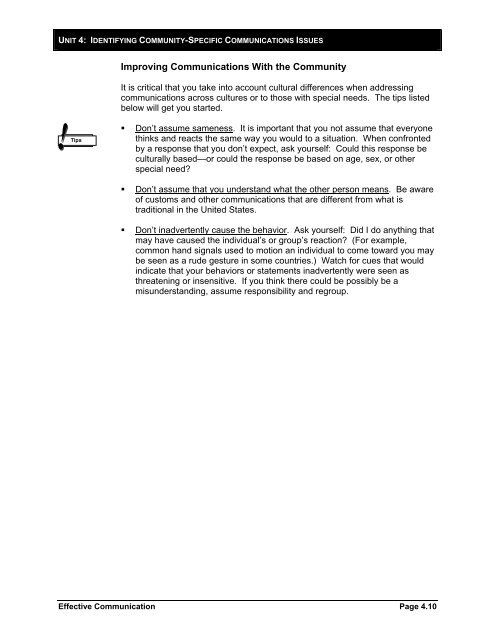Effective Communication - Emergency Management Institute ...
Effective Communication - Emergency Management Institute ...
Effective Communication - Emergency Management Institute ...
Create successful ePaper yourself
Turn your PDF publications into a flip-book with our unique Google optimized e-Paper software.
UNIT 4: IDENTIFYING COMMUNITY-SPECIFIC COMMUNICATIONS ISSUES<br />
Tips<br />
Improving <strong>Communication</strong>s With the Community<br />
It is critical that you take into account cultural differences when addressing<br />
communications across cultures or to those with special needs. The tips listed<br />
below will get you started.<br />
Don’t assume sameness. It is important that you not assume that everyone<br />
thinks and reacts the same way you would to a situation. When confronted<br />
by a response that you don’t expect, ask yourself: Could this response be<br />
culturally based—or could the response be based on age, sex, or other<br />
special need?<br />
Don’t assume that you understand what the other person means. Be aware<br />
of customs and other communications that are different from what is<br />
traditional in the United States.<br />
Don’t inadvertently cause the behavior. Ask yourself: Did I do anything that<br />
may have caused the individual’s or group’s reaction? (For example,<br />
common hand signals used to motion an individual to come toward you may<br />
be seen as a rude gesture in some countries.) Watch for cues that would<br />
indicate that your behaviors or statements inadvertently were seen as<br />
threatening or insensitive. If you think there could be possibly be a<br />
misunderstanding, assume responsibility and regroup.<br />
<strong>Effective</strong> <strong>Communication</strong> Page 4.10

















